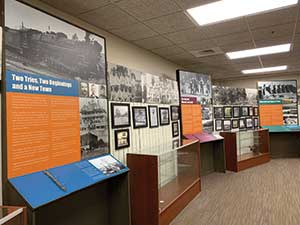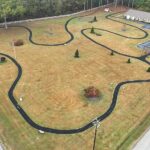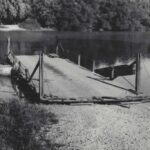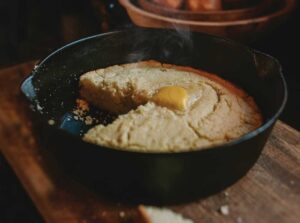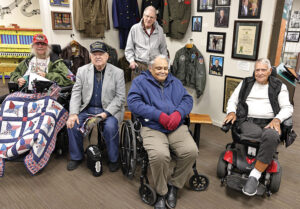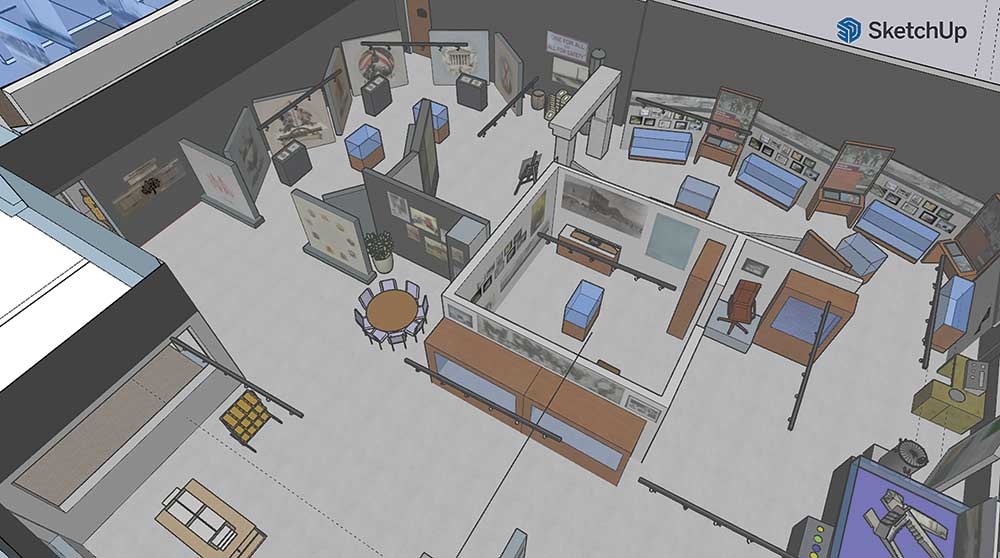
Years of effort pay off with early 2023 opening
When the doors open to the new Museum of Pell City in early 2023, the journey to that pivotal point cannot be measured in steps or miles but in a vision and outright determination.
“It represents a group of people whose love of history and preservation never wavered along the way despite the twists and turns of the road to get here, and it will be an historic day for our community because of their perseverance,” said Museum President Carol Pappas.
When the ribbon is officially cut, the community will welcome a museum that exceeds the expectations of cities of comparable size. It features the local exhibit from mill town to global marketplace and so many people, places and events in history in between.
The Making of Alabama, the state’s bicentennial exhibit awarded to Museum of Pell City by Alabama Humanities Alliance, showcases Alabama’s 200 years of statehood and beyond. Within that exhibit are artifacts and little-known nuggets of Pell City history weaved into the story that unfolds.
Just like the whistle that sounded the beginning of shifts at Avondale Mills, formerly Pell City Manufacturing, at the turn of the 20th century, the museum will have its own replica of that whistle at the entrance to the exhibit, signifying the start of a new day.
Museum cases, made possible through gifts from citizens, are full of artifacts that bring the stories and photos of Pell City history to life. Hundreds of old photos are accessed on computer tablets for each period of history. A simple swipe across the screen reveals photo after photo of the days that were.
An interior room has been built to house music history, art and sports, and the national impact of Pell Citians on all three.
Another section tells the story of service with organizations and individuals dedicating themselves in public service, military and civic arenas.
The county exhibit that Miss Mays pioneered is featured as well as the places where memories were made – hangouts like the Rexall Drugs, Skad’s, Jill’s and Dairy Queen.
Alabama Power Foundation partnered with the museum on a project to build a working dam model to take visitors behind the scenes of Logan Martin Dam and the impact it had on the region. A $45,000 grant from the Foundation made the stunning exhibit possible as well as other aspects of the museum.
Pell City is no longer a mill town, and the Global Marketplace reflects exactly that – the evolution of Pell City as a player on the world stage in business.
The centerpiece of the museum is a Living History Studio, which will be used to record and produce oral history videos designed to capture recollections of events, people and places in history of the community.
A mobile video team will be dispatched on location for those who cannot travel, and a special project involving veterans of three wars – World War II, Korean and Vietnam – will make use of a partnership between the museum and the Col. Robert L. Howard State Veterans Home in Pell City.
A control room adjacent to the studio is planned as a working classroom for students to not only develop an appreciation for history through work with these oral histories but to hone skills in video production, audio, lighting, interviewing and research.
Lawley is spearheading the ongoing program. “Since 1968, when my husband, Barnett, brought me to Pell City, I have been enriched by tales of an agricultural area with a Mayberry-paced town where everyone set their watch by the mill whistle. How quickly it began to transform with the damming of a river,” she said. “We are losing the voices that make you smile, laugh, cry or reflect with their wonderful stories. Our goal is to have a living museum; the oral histories will provide that feeling before more are silenced.”
From ‘what if?’ to ‘where and when?’
Museum of Pell City was a vision long before this 4,000-square-foot suite became its home. That vision took many forms. The late Mary Mays, long known as an advocate for historic preservation, spearheaded a movement to place museum cases full of artifacts in the county courthouse in Pell City.
Others worked toward restoring the Mays House in Cropwell. Still others created April Walking Tours of historic downtown Pell City.
Another group brought the Smithsonian and Alabama Humanities Alliance exhibit, The Way We Worked, to Pell City in 2014 at the Center for Education and Performing Arts, CEPA, and created an impressive local history exhibit. That display, melded with the Smithsonian’s exhibition saw more than 7,000 people tour during its three-week stay.
It is widely viewed as the spark, a tipping point that caught fire and convinced a grassroots group that Pell City could indeed have its own museum. “So many people who toured that exhibition approached us about establishing a museum,” said Pam Foote, who served as project director of The Way We Worked. “It was gratifying, yes, but it also represented a huge hill to climb.”
There was no place to house it. How could a single exhibit grow into a museum?
So, Foote and Deanna Lawley, co-chairmen of the 2014 event, along with Pappas asked the city to store it, realizing it could be the nucleus of a museum. For seven years, it remained intact in the basement of the municipal complex while they pushed for a home.
They enlisted Jeremy Gossett, a local businessman with a deep love for history and an extensive background in set and museum design, to bring the vision to life. He had assisted on the design of the 2014 Pell City Works exhibit. “We are so fortunate to have someone of Jeremy’s caliber, talent and creativity working with us,” Pappas said. “His work is truly amazing.”
There was talk of locating it in the long vacant administrative building, the single structure still standing on the Avondale Mills property, and that course was pursued for a few years. After the Pell City Library moved into its new quarters in the municipal complex, that vacant building was seen as a temporary solution on location. The group pursued its prospects as well.
Then, Councilman Jay Jenkins had an idea in 2021, and his ‘what if’ turned into the museum’s home – two floors up from its storage in the municipal complex. The museum occupies a massive suite on the second floor.
“The city has been a terrific supporter of this museum,” Pappas said. “We couldn’t ask for better partners than the mayor, city manager and council. They provided us the space, infrastructure support and best of all, moral support for this project. Without them, we never would have made it this far.”
After the public ceremony officially cutting the ribbon Museum of Pell City, plans call for the museum to be open Thursdays and Fridays from 10 a.m. to 5 p.m., on Saturdays from 10 a.m. to 2 p.m. and by special appointment for groups.














